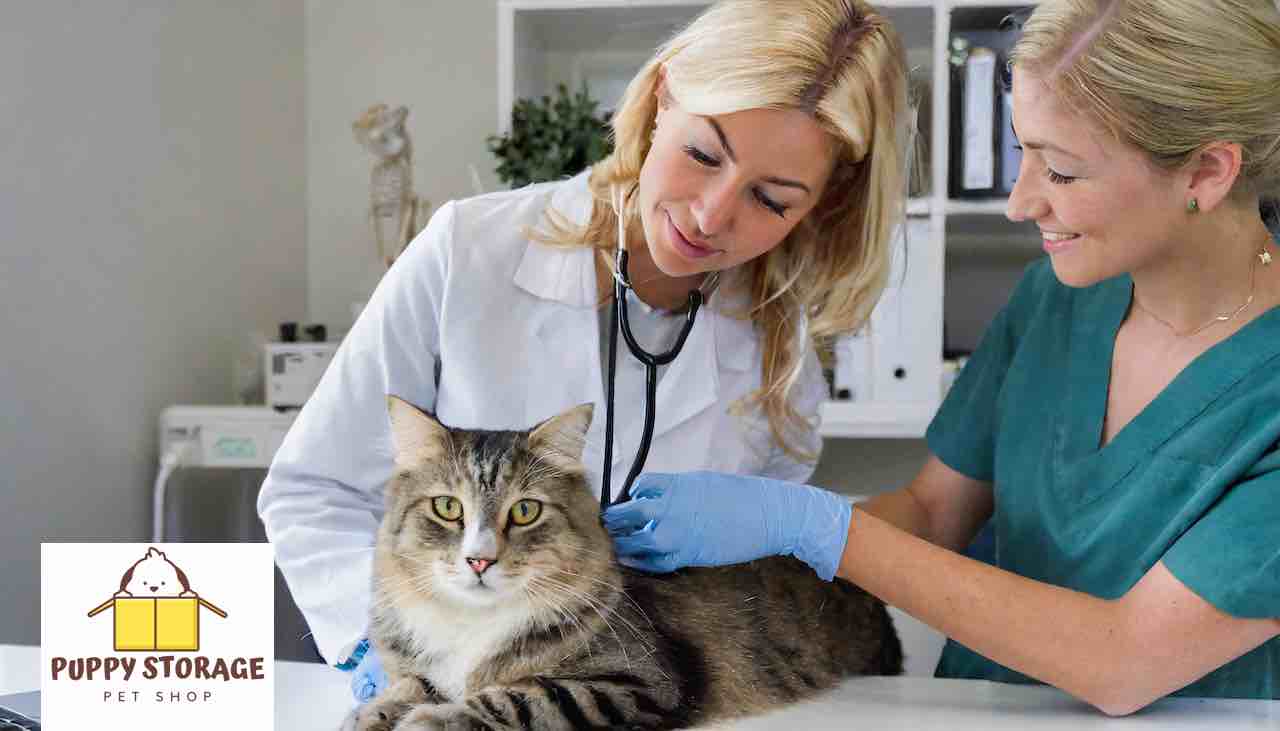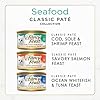Unveiling the Importance of Pet Insurance Through Real-Life Scenarios
Ever found yourself pondering the significance of pet insurance and whether it’s truly a necessity for your furry companion?
In this exploration, we dive into real-life scenarios that vividly illustrate the importance of having comprehensive pet insurance coverage. The question that lingers: How can pet insurance safeguard the well-being of your beloved pet when unforeseen challenges arise?
The Unexpected Ailment
Consider a scenario where your once lively pet suddenly faces an unexpected ailment. Without warning, veterinary bills pile up, leaving you grappling with unforeseen expenses. How does having pet insurance provide a financial safety net, ensuring that your pet receives the necessary medical care without compromise?
In a scenario where your once lively pet faces an unexpected ailment, comprehensive pet insurance becomes invaluable. To address this problem effectively, you should consider obtaining an insurance plan covering accidents and illnesses. Here are key components to look for:
Accident Coverage:
- Ensure the pet insurance plan includes coverage for accidents. This encompasses injuries or unexpected incidents, such as fractures, bites, or ingestion of harmful substances.
- Look for policies that cover diagnostic tests, X-rays, emergency veterinary visits, and any necessary surgical procedures resulting from accidents.
Illness Coverage:
- Choose a pet insurance plan that offers coverage for illnesses, including sudden and unforeseen health issues. This may include infections, gastrointestinal problems, or any ailment that requires medical attention.
- Verify that diagnostic tests, treatments, medications, and hospitalization related to illnesses are covered under the insurance policy.
Annual Limits and Deductibles:
- Understand the annual limits and deductibles associated with the pet insurance plan. Ensure that the coverage limits are sufficient to handle potential veterinary bills, especially in the case of unforeseen expenses.
Reimbursement Percentage:
- Evaluate the reimbursement percentage offered by the insurance plan. A higher percentage means you’ll be reimbursed for a larger portion of the veterinary expenses, easing the financial burden.
Waiting Periods:
- Be aware of any waiting periods associated with the insurance policy. Some plans may have waiting periods before certain coverage becomes effective. Choose a plan with minimal waiting periods to ensure timely access to benefits.
Hereditary and Congenital Conditions:
- Check whether the pet insurance covers hereditary and congenital conditions. Some breeds may be prone to specific health issues, and having coverage for such conditions is crucial.
Routine and Preventive Care (Optional):
- Some pet insurance plans offer optional coverage for routine and preventive care. While this may not directly address unexpected ailments, having coverage for routine check-ups and vaccinations can contribute to overall preventive healthcare.
Prescription Medications:
- Ensure that the insurance plan covers prescription medications. In the scenario of unexpected ailments, your pet may require medications, and having coverage for these prescriptions can be vital.
Coverage for Specialist Care:
- Consider whether the insurance plan provides coverage for specialist care. If your pet’s unexpected ailment requires specialized treatment from a veterinary specialist, having coverage for such services is beneficial.
Customer Reviews and Reputation:
- Research and consider the reputation of the pet insurance provider. Read customer reviews to ensure that the company is known for processing claims efficiently and providing support during challenging times.
By selecting a pet insurance plan that incorporates these elements, you can establish a robust financial safety net for your pet, ensuring they receive the necessary medical care without compromise in the face of unexpected ailments.
The Mischievous Mishap
Imagine a mischievous escapade that results in your pet needing urgent attention. Whether it’s ingesting a foreign object or sustaining an injury during play, emergencies can happen when least expected. How does pet insurance alleviate the financial strain, allowing you to focus on your pet’s recovery without the burden of unexpected costs?
For scenarios involving a mischievous mishap, it’s crucial to have pet insurance that covers accidents and emergency care. Here are key features to look for when selecting pet insurance to address mischievous mishaps:
Accident Coverage:
- Ensure the pet insurance plan includes comprehensive accident coverage. This encompasses injuries and emergencies resulting from naughty behavior, such as ingesting harmful substances, sustaining injuries during play, or any other accidental incidents.
Emergency Veterinary Visits:
- Verify that the insurance plan covers emergency veterinary visits. Mischievous mishaps often lead to urgent situations, and coverage for immediate medical attention is vital.
Diagnostic Tests and Imaging:
- Look for coverage that includes diagnostic tests and imaging. In the aftermath of a mishap, diagnostic procedures like X-rays or laboratory tests may be necessary for an accurate assessment of your pet’s condition.
Surgical Procedures:
- Ensure the insurance plan covers surgical procedures resulting from accidents. Mischievous activities can sometimes lead to injuries that require surgical intervention, and coverage for these procedures is essential.
Hospitalization Coverage:
- Verify that the insurance policy provides coverage for hospitalization. In the event of severe injuries from a mischievous mishap, hospitalization may be required, and having this covered is crucial.
Reimbursement Percentage:
- Consider the reimbursement percentage offered by the insurance plan. A higher reimbursement percentage means you’ll receive a larger portion of the incurred expenses back, providing financial relief.
Annual Limits and Deductibles:
- Understand the annual limits and deductibles associated with the insurance policy. Adequate coverage limits and reasonable deductibles are essential to managing unforeseen expenses resulting from mischievous mishaps.
Waiting Periods:
- Be aware of any waiting periods in the insurance policy. Opt for a plan with minimal waiting periods to ensure quick access to coverage in the event of a mischievous incident.
Prescription Medications:
- Check whether the insurance plan covers prescription medications. After a mischievous mishap, your pet may require medications for recovery, and having coverage for these prescriptions is beneficial.
Specialist Care Coverage:
- Consider whether the insurance plan provides coverage for specialist care. If a mischievous mishap leads to specialized treatment from a veterinary specialist, having coverage for such services is important.
Customer Reviews and Reputation:
- Research the reputation of the pet insurance provider. Read customer reviews to ensure that the company has a positive track record of processing claims efficiently, particularly for mishaps and emergencies.
By selecting a pet insurance plan with these features, you can ensure your pet is covered for mischievous mishaps, providing you with peace of mind and financial support during unexpected incidents.
Chronic Conditions Unveiled
Now, envision the discovery of a chronic condition that requires ongoing treatment and management. The prospect of long-term care can be overwhelming, both emotionally and financially. How does pet insurance provide a lifeline, ensuring that your commitment to your pet’s health remains unwavering even in the face of extended medical needs?
When considering pet insurance for chronic conditions, it’s essential to look for comprehensive coverage that addresses the long-term and ongoing needs of your pet. Here are key features to consider when selecting pet insurance to manage chronic conditions:
Chronic Illness Coverage:
- Ensure that the pet insurance plan explicitly covers chronic illnesses. Look for policies that provide coverage for conditions requiring ongoing management, such as diabetes, arthritis, or allergies.
Ongoing Treatment and Medications:
- Verify that the insurance policy covers the costs of ongoing treatment and medications required to manage chronic conditions. This includes prescription medications, therapeutic diets, and any specialized care prescribed by a veterinarian.
Diagnostic Tests and Monitoring:
- Look for coverage that includes diagnostic tests and monitoring required for managing chronic conditions. Regular check-ups, laboratory tests, and imaging should be covered to ensure proper monitoring and adjustment of treatment plans.
Specialist Care Coverage:
- Consider whether the insurance plan provides coverage for specialist care. Chronic conditions may require the expertise of veterinary specialists, and having coverage for consultations with specialists is crucial.
Reimbursement Percentage:
- Choose a plan with a higher reimbursement percentage. Chronic conditions often involve ongoing expenses, and a higher reimbursement rate ensures that you receive a larger portion of the incurred costs back.
Annual Limits and Deductibles:
- Understand the annual limits and deductibles associated with the insurance policy. Select a plan with sufficient coverage limits to handle the long-term expenses associated with chronic conditions and reasonable deductibles.
Waiting Periods:
- Be aware of any waiting periods in the insurance policy. Choose a plan with minimal waiting periods for coverage related to chronic conditions, ensuring timely access to benefits.
Hereditary and Congenital Conditions:
- Check whether pet insurance covers hereditary and congenital conditions. Chronic conditions may have a genetic component, and having coverage for these conditions is important, especially for breeds predisposed to certain health issues.
Alternative and Holistic Therapies (Optional):
- Some pet insurance plans offer optional coverage for alternative and holistic therapies. If you’re exploring complementary treatments like acupuncture or physical therapy for chronic conditions, consider plans that provide coverage for these options.
Customer Reviews and Reputation:
- Research the reputation of the pet insurance provider. Read customer reviews to ensure that the company has a positive track record of supporting pet owners in managing chronic conditions and processing claims efficiently.
By selecting a pet insurance plan with these features, you can ensure that your pet receives the necessary support for managing chronic conditions, providing both financial assistance and peace of mind during extended periods of care.
The Unpredictable Accidents
Consider the unpredictable nature of accidents, from fractures to sudden illnesses. In the blink of an eye, your pet’s well-being becomes the top priority. How does having pet insurance act as a safety cushion, allowing you to make decisions based on the best interests of your pet rather than financial constraints?
For scenarios involving unpredictable accidents, it’s essential to consider pet insurance that provides comprehensive coverage for accidents and emergency care. Here are key features to look for when selecting pet insurance to address unpredictable accidents:
Accident Coverage:
- Ensure the pet insurance plan offers robust accident coverage. This should include injuries resulting from unforeseen accidents, such as fractures, cuts, or sudden illnesses.
Emergency Veterinary Visits:
- Verify that the insurance plan covers emergency veterinary visits. Unpredictable accidents often require immediate medical attention, and coverage for emergency visits is crucial.
Diagnostic Tests and Imaging:
- Look for coverage that includes diagnostic tests and imaging. Accidents may necessitate diagnostic procedures like X-rays or laboratory tests for an accurate diagnosis.
Surgical Procedures:
- Ensure the insurance policy covers surgical procedures resulting from accidents. Unpredictable accidents may lead to injuries requiring surgical intervention, and coverage for these procedures is essential.
Hospitalization Coverage:
- Verify that the insurance plan provides coverage for hospitalization. Severe accidents may require hospitalization, and having this covered is vital for comprehensive care.
Reimbursement Percentage:
- Consider the reimbursement percentage offered by the insurance plan. A higher reimbursement percentage means you’ll receive a larger portion of the incurred expenses back, easing the financial burden.
Annual Limits and Deductibles:
- Understand the annual limits and deductibles associated with the insurance policy. Adequate coverage limits and reasonable deductibles are essential for managing unexpected expenses resulting from accidents.
Waiting Periods:
- Be aware of any waiting periods in the insurance policy. Opt for a plan with minimal waiting periods to ensure quick access to coverage in the event of unpredictable accidents.
Prescription Medications:
- Check whether the insurance plan covers prescription medications. After accidents, your pet may require medications for recovery, and having coverage for these prescriptions is beneficial.
Specialist Care Coverage:
- Consider whether the insurance plan provides coverage for specialist care. Unpredictable accidents may lead to specialized treatment from a veterinary specialist, and having coverage for such services is important.
Customer Reviews and Reputation:
- Research the reputation of the pet insurance provider. Read customer reviews to ensure that the company has a positive track record of processing claims efficiently, particularly for accidents and emergencies.
By selecting a pet insurance plan with these features, you can ensure that your pet is adequately covered for unpredictable accidents, providing you with peace of mind and financial support during unforeseen incidents.
Aging Gracefully with Comprehensive Coverage
Now, picture your pet entering their golden years, where age-related issues may start to surface. The challenges of aging pets require special attention, including potential medical expenses. How does pet insurance cater to the evolving needs of your senior companion, ensuring their twilight years are filled with comfort and care?
For scenarios involving aging pets, comprehensive coverage is crucial to address the evolving healthcare needs associated with senior pets. When considering pet insurance for aging gracefully with comprehensive coverage, look for the following features:
Illness and Accident Coverage:
- Choose a pet insurance plan that provides comprehensive coverage for both illnesses and accidents. This includes coverage for unexpected health issues as well as accidents that may occur in the senior years.
Chronic Condition Coverage:
- Ensure the insurance plan covers chronic conditions. As pets age, they may develop chronic health issues that require ongoing management and treatment. Comprehensive coverage for chronic conditions is essential for senior pet care.
Diagnostic Tests and Imaging:
- Look for coverage that includes diagnostic tests and imaging. Comprehensive coverage should encompass the diagnostic procedures necessary for identifying and managing health issues in aging pets.
Specialist Care Coverage:
- Consider whether the insurance plan provides coverage for specialist care. Senior pets may require specialized treatment from veterinary specialists, and having coverage for such services is crucial.
Prescription Medications:
- Check whether the insurance plan covers prescription medications. As pets age, they may need medications for chronic conditions, and having coverage for these prescriptions is important.
Hospitalization Coverage:
- Verify that the insurance policy includes coverage for hospitalization. Senior pets may be more prone to health issues that require hospitalization, and having this covered is vital.
Reimbursement Percentage:
- Consider the reimbursement percentage offered by the insurance plan. A higher reimbursement percentage means you’ll receive a larger portion of the incurred expenses back, providing financial support for senior pet care.
Annual Limits and Deductibles:
- Understand the annual limits and deductibles associated with the insurance policy. Adequate coverage limits and reasonable deductibles are crucial for managing healthcare expenses in the senior years.
End-of-Life Services (Optional):
- Some pet insurance plans offer optional coverage for end-of-life services. This may include coverage for euthanasia or cremation, and providing additional support during difficult times.
Waiting Periods:
- Be aware of any waiting periods in the insurance policy. Opt for a plan with minimal waiting periods to ensure quick access to coverage for senior pet healthcare needs.
Customer Reviews and Reputation:
- Research the reputation of the pet insurance provider, specifically in handling claims related to senior pets. Read customer reviews to ensure that the company is known for providing compassionate and efficient service.
By selecting a pet insurance plan with these features, you can ensure comprehensive coverage for your aging pet, addressing their unique healthcare needs and providing support throughout their senior years.
Unseen Allergies and Chronic Conditions
Imagine the complexities of uncovering allergies or chronic conditions that may manifest over time. Diagnosing and managing these conditions involve a series of veterinary visits and treatments. How does pet insurance support you in navigating the intricacies of unforeseen health challenges, providing peace of mind in times of uncertainty?
For scenarios involving unseen allergies and chronic conditions, comprehensive pet insurance is essential to provide coverage for ongoing and unexpected healthcare needs. Here are key features to consider when selecting pet insurance for unseen allergies and chronic conditions:
Illness Coverage:
- Ensure the pet insurance plan offers extensive illness coverage. This should include coverage for chronic conditions and allergies that may develop over time.
Diagnostic Tests and Imaging:
- Look for coverage that includes diagnostic tests and imaging. Unseen allergies and chronic conditions often require thorough diagnostics for accurate identification and management.
Specialist Care Coverage:
- Consider whether the insurance plan provides coverage for specialist care. Allergies and chronic conditions may require treatment from veterinary specialists, and having coverage for such services is crucial.
Prescription Medications:
- Check whether the insurance plan covers prescription medications. Pets with chronic conditions often need ongoing medication, and having coverage for these prescriptions is vital.
Allergy Testing and Treatment:
- Ensure that the pet insurance plan covers allergy testing and treatment. Comprehensive coverage should include the costs associated with identifying and managing allergies in your pet.
Reimbursement Percentage:
- Consider the reimbursement percentage offered by the insurance plan. A higher reimbursement percentage means you’ll receive a larger portion of the incurred expenses back, providing financial support for ongoing healthcare needs.
Annual Limits and Deductibles:
- Understand the annual limits and deductibles associated with the insurance policy. Adequate coverage limits and reasonable deductibles are crucial for managing expenses related to chronic conditions and allergies.
Waiting Periods:
- Be aware of any waiting periods in the insurance policy. Opt for a plan with minimal waiting periods to ensure quick access to coverage for chronic conditions and allergies.
Hereditary and Congenital Conditions:
- Check whether the pet insurance covers hereditary and congenital conditions. Some allergies and chronic conditions may have a genetic component, and having coverage for these conditions is important.
Customer Reviews and Reputation:
- Research the reputation of the pet insurance provider. Read customer reviews to ensure that the company is known for efficiently processing claims related to chronic conditions and allergies.
Alternative Therapies (Optional):
- Some pet insurance plans offer optional coverage for alternative therapies. If you’re interested in holistic or alternative treatments for allergies and chronic conditions, consider a plan that includes these options.
By selecting a pet insurance plan with these features, you can ensure comprehensive coverage for your pet’s unseen allergies and chronic conditions, providing financial support for ongoing healthcare needs and ensuring their well-being.
In these real-life scenarios, the importance of pet insurance unfolds as a guardian of care for your furry friend. Whether facing unexpected ailments, mischievous mishaps, chronic conditions, unpredictable accidents, or the challenges of aging, comprehensive pet insurance coverage emerges as a crucial ally. The question answered through these scenarios is clear: How can pet insurance empower you to prioritize your pet’s health, no matter the twists and turns life may bring?





































